028: How to Get to Your Camino de Santiago Starting Point (Last 100km / 1-Week Camino)
Getting to the Camino: The First Challenge Pilgrims Face (Sarria, Tui, Ferrol and more)
Hello Camino friends! Here’s what’s in this issue:
📣Last Call: Walk With Rebecca on the Camino Inglés
📆 “How To Get To Your Camino Starting Point (last 100km)”
📸Scenes from the Camino: Starting Points
🎥I’m going live on Substack! Would love to see you there.
🥾How to get help planning your Camino.
Are you getting my posts directly to your email or Substack feed? If not, click here to join us.
📣Last call—Walk With Rebecca on the Camino Inglés
If you’d like to join me and a small group on the Camino Inglés starting Oct 3, click here for the details. Clarity Calls (to see if the trip is a good fit for you) must be held before 3pm ET tomorrow (Monday, Sept 1).
“What’s the Camino?”
❓Not even sure what the Camino de Santiago is? Start here.
🤔Heard of the Camino but not sure if it’s for you? Read this.
Let’s get started!
✈️ How to Get to Your Camino Starting Point (1-Week Trip)
The woman plopped down and almost melted into the chair. Her smile seemed forced out of her desire to be nice, despite her exhaustion.
“Congratulations,” I said. “You made it.”
Her face lit up and she laughed.
“It’s not easy to get here,” I said.
“You’re not kidding,” she responded.
She hadn’t yet walked a single step of the Camino; she was sitting across from me in the Pilgrim Office in St. Jean Pied de Port, France, one of the many possible starting points on the Camino de Santiago.
I’ve volunteered there four times and have been in this scene countless times—pilgrims finally arriving after planes, trains, buses, and taxis. Getting to your Camino starting point is often its own mini-adventure!
Below I’ll outline how to get to the most popular starting points if you want to do a 5-7 day Camino (the last 100km/60 miles).
🗺️ Step 1: Choose Your Starting Point Carefully
Most Camino starting points are not easy to reach. People often say, “I’ll just fly into Madrid” without checking where the nearest airport to their starting point actually is.
Tip: Before booking flights, know exactly where your Camino begins—and how you’ll get there. (Keep reading for how to do that.)
✈️ Step 2: Fly Smart
If possible, fly into (or out of) an airport closest to your Camino starting or ending point. The airports below all connect with Madrid as well as some other cities. Each is a great gateway for beginning a 100 km Camino, though I tossed in one longer option.
💡 Tip: Arrive on a weekday for more bus/train options, and avoid Spanish holidays when services are limited.
Fly to Santiago de Compostela (SCQ) Airport:
✨ Camino Francés (last 100 km) – Bus/train to Sarria.
✨ Camino Portugués (Coastal & Central) – Bus south to Tui (Central) or A Guarda/Baiona (Coastal).
✨ Camino Inglés – Train/bus north to Ferrol or A Coruña.
✨ Camino Sanabrés (from Ourense) – Train to Ourense for the last 100+ km. Bonus: Quieter than the other three routes
✨ Camino Invierno: Train to Ourense, then to Monforte de Lemos
Fly to A Coruña (LCG) Airport:
✨ Camino Inglés (Ferrol start) – Quick bus/train to Ferrol for the full 110 km.
✨ Other Caminos (via train) – Possible to connect to Vigo (Portugués) or Ourense (Sanabrés), though Santiago airport is easier for these.
Fly to Vigo (VGO) Airport:
✨ Camino Portugués (Coastal & Central) – Vigo is on the Portuguese Coastal Route, which joins the Central route after a day or two of walking.
✨ Camino Portugués (from Porto) – Bus south (1.5–2 hours) to Porto.
✨ Camino Inglés – Not as close as other airports, but still possible to get to Ferrol.
✨ Camino Sanabrés (from Ourense) – Train east to Ourense for the last 100+ km.
Fly to Porto Airport (OPO) Airport:
✨ Camino Portugués (Central Route) –The walk from Porto is ~240 km, 12–14 days. Or you can take a bus to Valenca, then a cab across the river to start in Tui to do the last 100km of the Camino Portugués.
✨ Camino Portugués (Coastal Route) – Take metro/bus to Matosinhos, then follow the Atlantic north.
🧭 Remember:
If you fly into Santiago, you only need transport to your starting point.
If you use A Coruña, Vigo, Porto, or others, plan both ways: getting to your starting point and returning to your departure airport from Santiago. I’ve met more than a few pilgrims who didn’t think this far ahead and were rushing their Camino to make a flight—don’t let that be you!
🚌 Step 3: Plan Your Transit
Once you know your arrival time:
Check public transit: Google Maps has a public transit option! (See image below)
Change the date and time to match your travel plans. If schedules aren’t posted yet, choose the same day of the week in the coming weeks for an estimate.
Be exact with your locations (e.g., “Porto Airport” instead of just “Porto”).
Look deeper than the first search result: A 3.5–5 hour estimate might actually be under 2 hours. Example: From the O Porto Airport, you can get a bus (1 hr 35 min) to Valenca. Then, it tells you to walk 30 minutes. That’s actually a nice walk over the river that separates Portugal from Spain, but after an overnight flight to get there? Maybe not the best idea. You can simply take a 10-minute taxi ride then come back later when you’re refreshed and can enjoy the walk over the bridge!
🚌 Transit Tips
Galicia’s bus system is called Monbus, but Omio.com and Trainline.com (which, despite its name, includes buses) are easier to navigate.
Train and bus schedules might only be released a few weeks ahead—don’t panic. Just check approximate schedules and note that weekends and holidays may have fewer options.
I recommend buying train and bus tickets ahead of time as you don’t need that added stress after a long flight! But remember train and bus schedules—and the ability to buy tickets—may not be available until a few months or weeks before your trip.
🔄 Step 4: Don’t Forget Your Return
Getting to your starting point is only half the journey. I said it earlier, but it’s worth repeating: have an idea of how to return from Santiago de Compostela to wherever your outgoing flight departs. Many pilgrims underestimate travel days and end up rushing their Camino.
On that note, plan at least 2 nights (ideally more) in Santiago de Compostela. There’s a lot to see there. And then, ideally, a couple days either in Spain or back home where you have no plans. Transitioning to life post-Camino can be a challenge and this helps.
❓ Which Do You Recommend?
Not Sarria. It’s the busiest stretch of the busiest route. Too many people. Too much commercialism.
The Camino Portugués is a good option (from Tui). Many pilgrims do this as their first Camino. (It’s the second most popular 100km route.) There’s a Spiritual Variant that I hear is great, but I haven’t yet done it. Maurice Frank, my Camino Conversations guest on Sept. 17, has—click here for that conversation.
If you’re looking for the easiest last 100km route as far as terrain goes, the Camino Inglés would be my recommendation. I did it for the first time in July, 2025 and did a live video each day which you can watch here.
If you’re an experienced hiker and want a Camino that has the trail markers and infrastructure but is not well-known yet, go with the Camino Invierno. The last 100km starts in Monforte de Lemos, but if you can—start in Ponferrada. You should know Spanish for this one.
I have not yet walked the last 100km from Ourense, so can’t speak to that.
My Camino Conversations guest on Oct 29, Dora Elias-McAllister, did the last 100 km from Lugo (on the Camino Primitivo) and I’m looking forward to hearing about that!
Speaking of Camino routes, I lead small groups on Camino trips. If you want to get notified when I plan my trips for next year, click here.
✨ Final Thoughts
Some say the first challenge of the Camino is simply getting there. Hopefully, you feel better about that planning process now.
With love,
Rebecca
💌 PS – If this planning feels overwhelming
Helping pilgrims figure out logistics like this is one of the many things I do with my clients! I can guide you through flights, buses, taxis, accommodations, luggage transfers, and more—so your Camino starts stress-free:
🗓️ Camino Planning Session (45 min): Get answers to your top questions and a notes doc created during our call.
📞 Full Camino Experience: 6 coaching calls to plan your trip with confidence and ease.
🥾 Walk With Rebecca: 7-day hybrid Camino walks — 3 days guided, 4 days independent, private rooms, preparation classes, and optional check-ins. Click here to be the first to be notified about my next trip.
You Have Questions. . . I’ve Got Answers
In my first Q and A I answered the following questions. Click here for the video.
Top Questions Answered:
🛏Do I have a recommended accommodations list? (3:02)
❛What do some of the Camino names mean? (8:45)
🚗How much road walking is there on the Camino? (9:50)
⛪️Is the Camino de Santiago religious? Do I have to be religious to walk the Camino? (13:29)
🚶How far will I actually walk each day? (19:34)
🎒Do You Have to Carry a Backpack or Sleep in Hostels? (24:06)
📆When’s the Best Time to Walk the Camino? (25:26)
💁♂️Is It Safe to Go Alone? (28:56)
🗣Do You Need to Know Spanish? (32:10)
💕How do I want to experience the Camino? (34:28)
👣How am I physically going to take care of my body? (39:14)
❓Am I open to changing my plans? (39:52)
🏡How will I adjust to life post-Camino? (41:55)
📸Scenes from the Camino: Starting Points
Medieval pilgrims (and some modern-day pilgrims) would walk out their door, walk to Santiago, and then walk back. So the Camino can “start” from a variety of places! Here are a few places from which I’ve started.
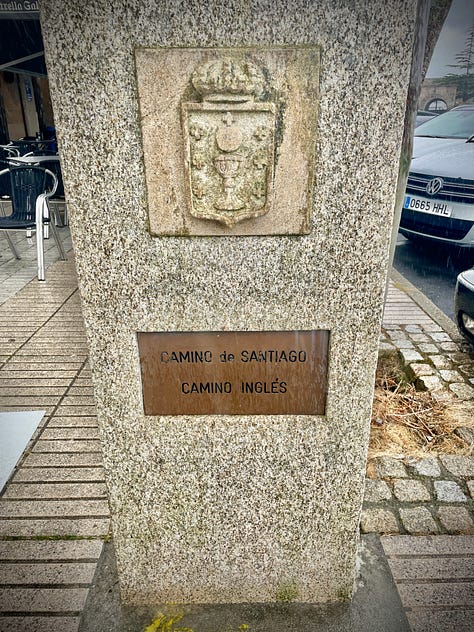
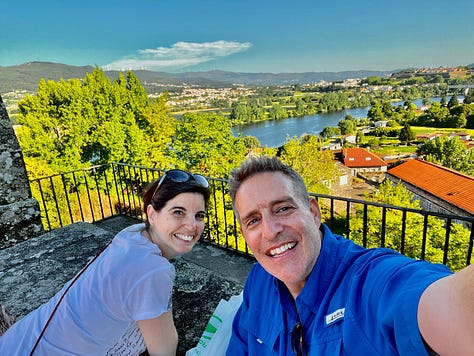

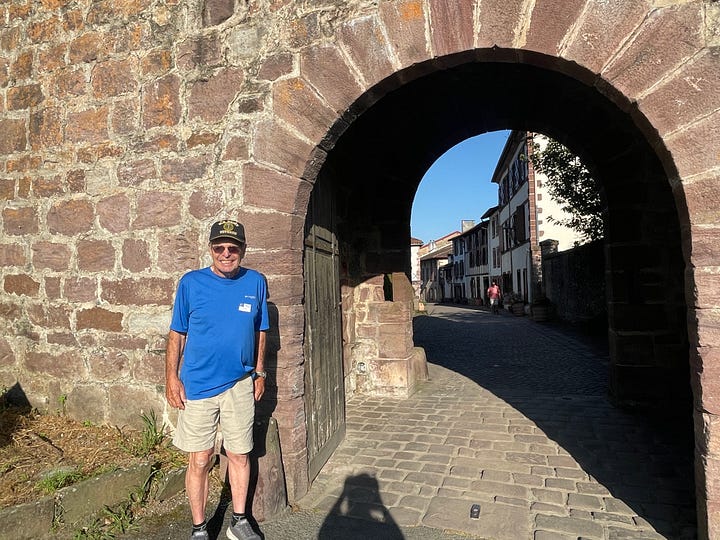
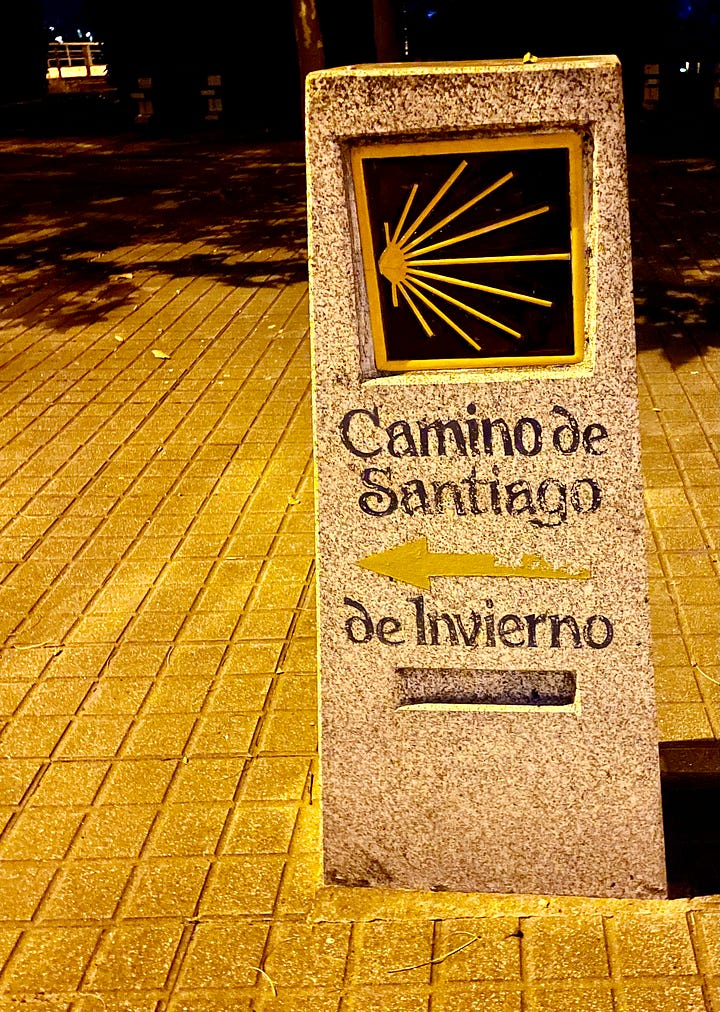
🎥Join me for live interviews here on Substack!
Sure, I can tell you all about how to train for, plan, and walk the Camino de Santiago. But what’s better than me? Conversations with others (45+) who have done it!
Wednesday, September 3, 11-11:45 ET: TBD
Wednesday, September 10, 11-11:45 ET: Hana Maris — Last August, at age 65, Hana walked the Camino Primitivo.
Wednesday, September 17, 11-11:45 ET: Maurice Frank — After completing his first Camino at 67 (the Camino Francés in 2023), he returned the following year to do the Camino Portugués (with Spritual Variant and on to Finisterre). He also volunteered at Pilgrim House in Santiago de Compostela.
Would you or someone you know like to be interviewed about your Camino experiences? Respond to this email or write a comment. I’d love to have you!
To see all previous interviews, click here.
📖What I’m Reading
There’s plenty of information about preparing for the Camino and plenty of videos and posts from people on the Camino. But returning from such an incredible journey. . . many don’t realize that can be a challenge as well.
As I’m about to lead a group on the Camino Inglés in October, one of the things I’m doing is researching more on this topic. My trip includes a post-Camino reflection session after everyone returns to their home countries. So why am I preparing now? Because there are some things you can do prior to leaving that will help make the return easier.
To this end, I’m re-reading Returning from Camino by Alexander John Shaia to refresh my memory on this topic.
(Want to be the first to be notified about my upcoming group trips? Click here.)
🥾Ready to start planning your Camino?
Rebecca Weston
Camino Planning & Preparation Guide (for People 45+)
Rebecca@TheCaminoCalls.com
Your Camino adventure should feel exciting, not stressful — here are some ways I can help you get ready:
🗓️ Camino Planning Session (45 min): Get answers to your top questions and a notes doc created during our call.
📞 Full Camino Experience: 6 coaching calls with detailed notes to plan your trip with confidence and ease.
🥾 Walk With Rebecca: 7-day hybrid Camino walks — 3 days guided, 4 days independent, private rooms, preparation classes, and optional check-ins. Click here to be the first to be notified about my next trip.Rebecca Weston is an American who walked her first Camino in 2012.


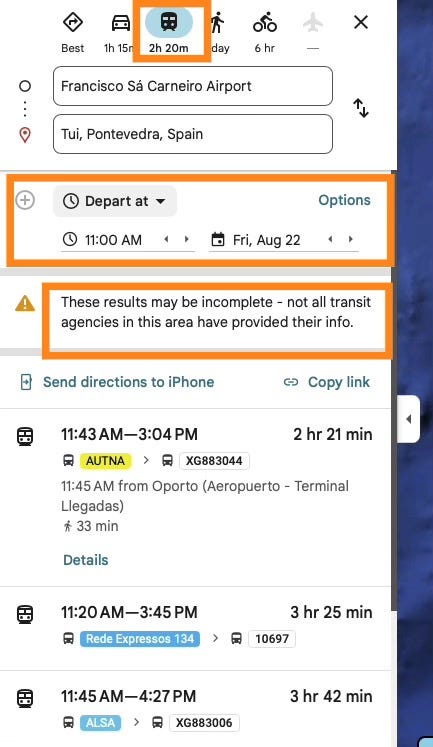
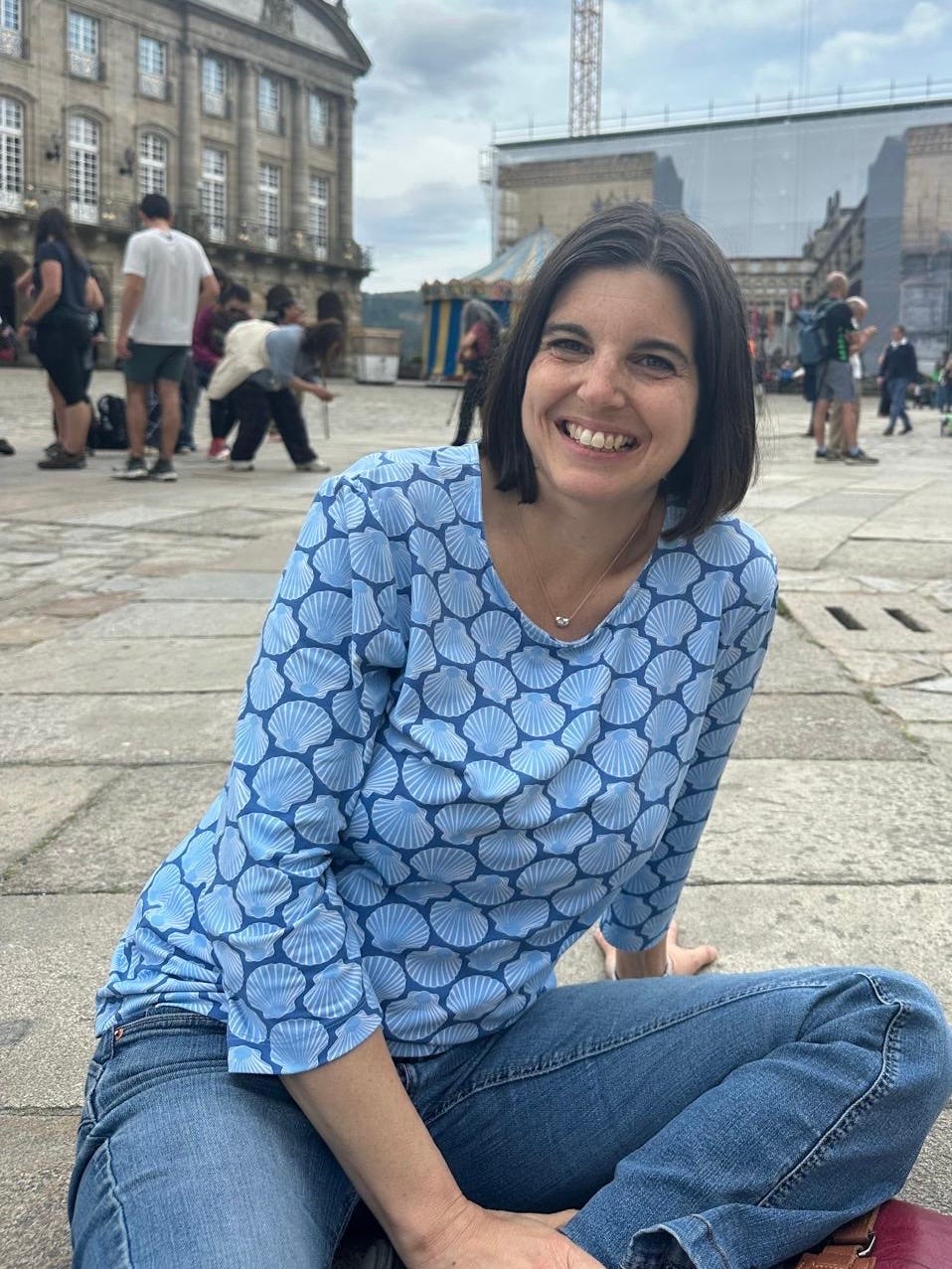
This is great. I've already done a little research on how to get to St Jean Pied de Port, and realized I would need to add a day to our itinerary just to get there from a major international airport like Barcelona or Madrid. Your details help clear things up further.